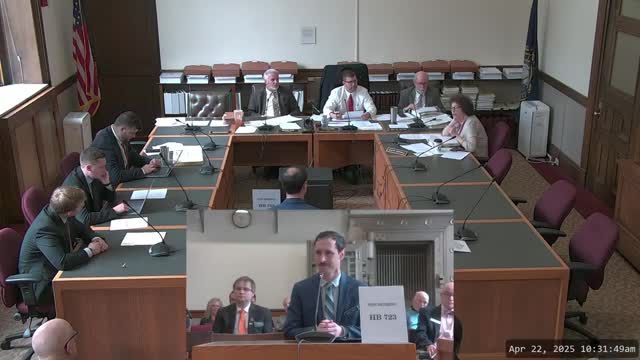Unitil calls for RFP process to reveal true costs of data platform in New Hampshire
April 22, 2025 | Energy and Natural Resources, Senate , Committees , Legislative, New Hampshire
This article was created by AI summarizing key points discussed. AI makes mistakes, so for full details and context, please refer to the video of the full meeting. Please report any errors so we can fix them. Report an error »

New Hampshire's Senate Energy and Natural Resources Committee is grappling with the complexities of a proposed data platform project, as discussions during the April 22, 2025, meeting highlighted concerns over costs and benefits. The committee is considering the issuance of a Request for Proposals (RFP) to better understand the financial implications of the initiative, which has been a legislative priority.
Key discussions revealed skepticism regarding the project's potential benefits, particularly in light of previous cost estimates that were based on a multi-state platform, suggesting that New Hampshire's costs could differ significantly. Committee members expressed the need for a thorough cost-benefit analysis before moving forward, emphasizing the importance of ensuring that any investment would ultimately benefit ratepayers.
Senator Pearl raised the possibility of allowing time for the RFP process to unfold, suggesting that if the project does not prove its merit, it should be allowed to sunset. This approach was met with acknowledgment from officials who noted that while they are tasked with implementing legislative directives, they also have the authority to raise concerns about the project's viability.
Alec O'Meara, Director of External Affairs at Unitil, underscored the necessity of certainty regarding the program's value before making any decisions. He pointed out that the RFP process could provide clarity on whether the data platform would deliver tangible benefits to customers. O'Meara shared insights from previous projects, such as a solar array initiative, where a cost-benefit analysis confirmed a net positive impact on customer bills.
As the committee continues to navigate these discussions, the focus remains on ensuring that any decisions made will prioritize the interests of New Hampshire's ratepayers. The next steps will involve evaluating the outcomes of the RFP process, which is expected to yield answers within approximately 14 weeks. This timeline will be crucial in determining the future of the project and its alignment with the state's energy goals.
Key discussions revealed skepticism regarding the project's potential benefits, particularly in light of previous cost estimates that were based on a multi-state platform, suggesting that New Hampshire's costs could differ significantly. Committee members expressed the need for a thorough cost-benefit analysis before moving forward, emphasizing the importance of ensuring that any investment would ultimately benefit ratepayers.
Senator Pearl raised the possibility of allowing time for the RFP process to unfold, suggesting that if the project does not prove its merit, it should be allowed to sunset. This approach was met with acknowledgment from officials who noted that while they are tasked with implementing legislative directives, they also have the authority to raise concerns about the project's viability.
Alec O'Meara, Director of External Affairs at Unitil, underscored the necessity of certainty regarding the program's value before making any decisions. He pointed out that the RFP process could provide clarity on whether the data platform would deliver tangible benefits to customers. O'Meara shared insights from previous projects, such as a solar array initiative, where a cost-benefit analysis confirmed a net positive impact on customer bills.
As the committee continues to navigate these discussions, the focus remains on ensuring that any decisions made will prioritize the interests of New Hampshire's ratepayers. The next steps will involve evaluating the outcomes of the RFP process, which is expected to yield answers within approximately 14 weeks. This timeline will be crucial in determining the future of the project and its alignment with the state's energy goals.
View full meeting
This article is based on a recent meeting—watch the full video and explore the complete transcript for deeper insights into the discussion.
View full meeting
